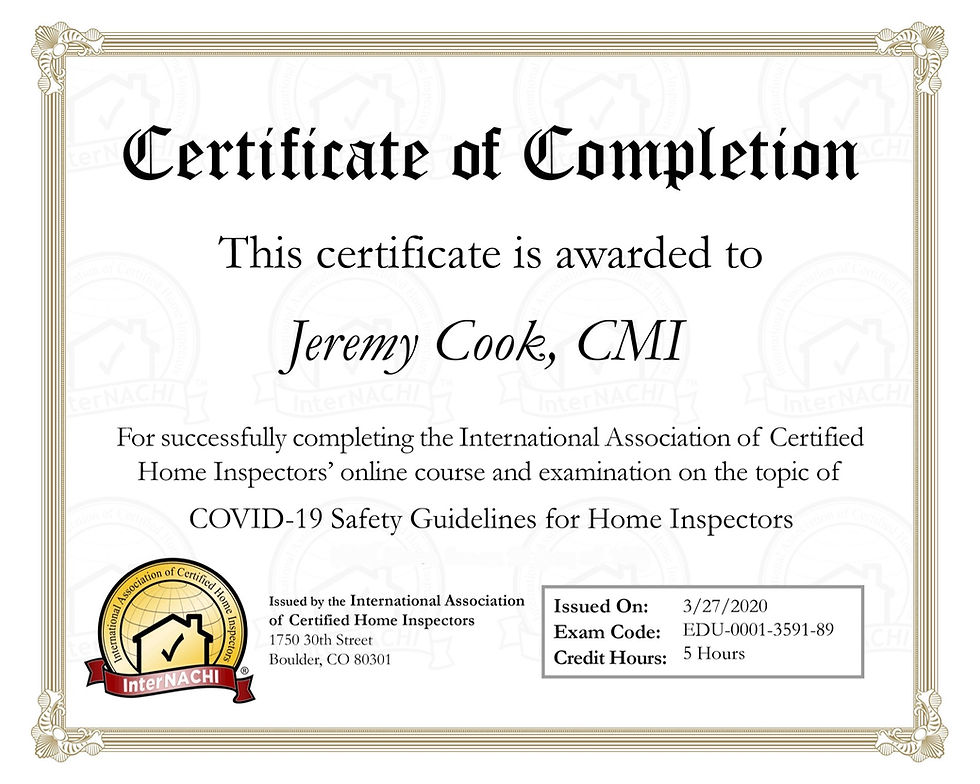10 Things to Check on Possession Day
- Jeremy Cook

- Jan 31, 2020
- 2 min read
1. With all the water fixtures in the home turned off, go to the mechanical room or main water shut off and locate the water meter. Watch the face of the water meter for movement of the leak indicator dial. If the pinwheel is moving, there may be a leak or a running toilet that requires attention.
2. www.inspectonthemoney.com/blogCheck proper function and physical condition of appliances.
Fridge/Freezer
Stove
Dishwasher
Microwave
Garburator
Washing Machine
Dryer
Central Vacuum
3. Turn up the heat at the thermostat and ensure the furnace turns on and provides heat to the home.
4. Turn on the A/C unit*** at the thermostat and ensure the unit turns on and provides cold air to the home.
*** If temperatures allow. Do not use/test the A/C system when outdoor temperatures are below 15°C
5. Turn on a hot water faucet in a bathroom or kitchen to ensure the water heater is providing hot water to the home.
6. Check all windows and doors for physical damage that may have occurred after the home inspection was completed.
7. Test the garage door opener and remotes to ensure proper operation. Re-set remote control codes to prevent unauthorized entry by previous owners/tenants.
8. Look for items that were to be included with the purchase of the home and verify they match what was expected. Example: central vacuum hoses and accessories, shelving, furniture, light fixtures, appliances.
9. Check the integrity of stairway railings as sometimes they are damaged during moving. Repair any loose railings to avoid personal injury.
10. Look for stains or damage that may have been concealed by furniture or storage at the time of the home inspection. Example: check the storage area under the basement staircase for signs of water penetration as this area is typically filled with storage during an inspection.






Comments